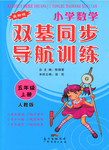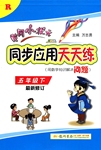
 BBC: The Chinese culture is fascinating. During China’s Lunar New Year or Spring Festival, paper-cutting is one of China’s most popular and characteristic folk arts. The tradition goes back to the 6th century. After hundreds of years of development, it has now become a very popular way to decorate the house among country folk, especially women. During the Spring Festival, people paste(粘贴)some paper-cuttings on the entrance gates. They are supposed to bring good luck for the family.
BBC: The Chinese culture is fascinating. During China’s Lunar New Year or Spring Festival, paper-cutting is one of China’s most popular and characteristic folk arts. The tradition goes back to the 6th century. After hundreds of years of development, it has now become a very popular way to decorate the house among country folk, especially women. During the Spring Festival, people paste(粘贴)some paper-cuttings on the entrance gates. They are supposed to bring good luck for the family.
The main cutting tools are simple: paper and scissors or an engraving(雕刻)knife. Clever craftspeople are very good at cutting out a theme about daily life. When you look at works made in this method carefully, you will be amazed by the details in the faces of the people as well as the plants and animals. Although other art forms, like painting, can also show similar scenes paper-cutting still stands out for its charm. Though simple, the color appears charmingly bright.
While it is easy to learn how to cut a piece of paper, mastering it is another thing. One must hold the knife in an upright fashion and press evenly on the paper with a little strength. Flexibility is required but the whole image will be damaged if you make one mistake. Engravers attempt to carve a circle like the moon, a straight line like a stem of wheat, a square like a brick, and many other forms, but not all of them can do them.
People find hope and comfort in expressing wishes with paper-cuttings. For a wedding ceremony, red paper-cuttings are traditional and required decorations for the furniture. Patterns of plump children holding fish signify that they will be wealthy next year.
63. Where does the writer of this passage probably come from?
A. The USA. B. Japan.
C. The UK. D. France.
64. Usually, paper-cuttings can amaze and impress people by_______ .
A. bringing good luck
B. being true-to-life
C. appearing charmingly bright
D. being all hand-made
65. When you do paper-cutting, you should_______.
A. hold the knife or scissors as tight as you can
B. avoid any unnecessary change
C. bear all the set rules in your mind
D. always be confident and not stop
66. We can learn from the passage that _______.
A. mastering paper-cutting skills is different from cutting a piece of paper
B. paper-cutting is the most popular characteristic folk art
C. women are better at paper-cutting than men
D. paper-cutting can nearly bring people good luck
 双基同步导航训练系列答案
双基同步导航训练系列答案 黄冈小状元同步计算天天练系列答案
黄冈小状元同步计算天天练系列答案科目:高中英语 来源:2013-2014学年黑龙江省双鸭山市高三12月月考英语试卷(解析版) 题型:单项填空
The word “tuhao” caught ______ attention of the dictionary’s editing team in UK after _____ BBC’s recent program on influential Chinese words.
A. the ; a B. the ; the C. a ; the D. / ; the
查看答案和解析>>
科目:高中英语 来源:2014届甘肃省高三目标诊断英语卷(解析版) 题型:阅读理解
The Channel is the name given to the stretch of water which separates England and France. Ferries operate all year round to carry people across the Channel, and they are busy most of the year. January is the only quiet month nowadays. As well as summer holiday-makers, there are day trippers and coach traffic, not to mention lorries and other commercial vehicles. Some ferries carry cars and their passengers, while others also connect train passengers with the Continental rail network.
The biggest hazard for the ferry is the wind. The crew listens to BBC weather reports four times a day. Or they sometimes get gale warnings from local radio station.
Crossing the Channel by ferry is a bit like trying to cross Oxford Street on a busy afternoon, according to one ferryboat captain. The ferries from Folkstone and Dover to Calais and Boulogne have to cross the main flow of traffic. This consists of ships traveling through the Channel to and from Northern Europe. There may be four hundred ships making the journey at any one time, and they all pass through a “choke point” which is only fifteen miles (twenty-five kilometers) wide. The cross-channel ferries have to sail right through the middle of all this traffic.
1.The passage is mainly concerned with _____.
A. the English Channel
B. the weather on the Channel
C. cross-channel ferries
D. what crossing the Channel by ferry is like
2.The word hazard is closest in meaning to ________.
A. trouble B. danger C. enemy D. problem
3.We can infer from the passage that _______.
A. if there is a gale warning from the BBC, the ferries will stop operating.
B. the traffic on the Channel is very busy only in winter
C. ferries are busiest in the afternoon
D. the crew of the ferry listens to the weather reports four times a day
4.Where does this passage most probably appear?
A. In a dictionary. B. In a novel.
C. In a transportation magazine. D. In a geography textbook.
查看答案和解析>>
科目:高中英语 来源:2015届江西省高一下学期期中考试英语试卷(解析版) 题型:单项填空
One can ______ BBC _____ the air early with his Short-wave radio.
A.pick up; on B.pick out; over C.pick up; through D.pick up; by
查看答案和解析>>
科目:高中英语 来源:2010年上海市崇明县高考模拟考试 题型:阅读理解
The Channel is the name given to the stretch of water which separates England and France. Ferries operate all year round to carry people across the Channel, and they are busy most of the year. January is the only quiet month nowadays. As well as summer holiday-makers, there are day trippers and coach traffic, not to mention lorries and other commercial vehicles. Some ferries carry cars and their passengers, while others also connect train passengers with the Continental rail network.
The biggest hazard for the ferry is the wind. The crew listens to BBC weather reports four times a day. Or they sometimes get gale warnings from local radio station.
Crossing the Channel by ferry is a bit like trying to cross Oxford Street on a busy afternoon, according to one ferryboat captain. The ferries from Folkstone and Dover to Calais and Boulogne have to cross the main flow of traffic. This consists of ships traveling through the Channel to and from Northern Europe. There may be four hundred ships making the journey at any one time, and they all pass through a “choke point” which is only fifteen miles (twenty-five kilometers) wide. The cross-channel ferries have to sail right through the middle of all this traffic.
1.The passage is mainly concerned with _____.
A. the English Channel B. the weather on the Channel
C. cross-channel ferries D. what crossing the Channel by ferry is like
2.The word hazard is closest in meaning to ________.
A. trouble B. danger C. enemy D. problem
3.We can infer from the passage that _______.
A. if there is a gale warning from the BBC, the ferries will stop operating.
B. the traffic on the Channel is very busy only in winter
C. ferries are busiest in the afternoon
D. the crew of the ferry listens to the weather reports four times a day
4.Where does this passage most probably appear?
A. In a dictionary. B. In a novel.
C. In a transportation magazine. D. In a geography textbook.
查看答案和解析>>
湖北省互联网违法和不良信息举报平台 | 网上有害信息举报专区 | 电信诈骗举报专区 | 涉历史虚无主义有害信息举报专区 | 涉企侵权举报专区
违法和不良信息举报电话:027-86699610 举报邮箱:58377363@163.com